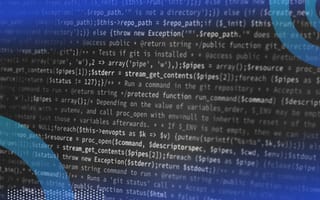Machine learning recently experienced a revival of public interest with the launch of ChatGPT. Though chat functionalities have consistently produced some interesting results, this new system has caught more attention than any previous machine learning accomplishment.
Businesses and researchers, however, have been working with these technologies for decades. Most large businesses, ranging from e-commerce platforms to AI research organizations, already use machine learning as part of their value proposition.
With the availability of data and the increasingly easy development of models, machine learning is becoming more accessible to all businesses and even solo entrepreneurs. As such, the technology will soon become more ubiquitous.
What Is Web Scraping?
Web scraping is the process of collecting data from websites through the use of bots that harvest and save a site’s code. The practice introduces unproductive traffic to a site and may mimic cybersecurity threats, which means many organizations try to block such bots.
What Happens During Web Scraping
Automated bots are an inevitable part of the internet landscape. Search engines rely on them to find, analyze, and index new websites. Travel fare aggregators rely on similar automation to collect data and provide services to their customers. Many other businesses also run bots at various stages of their value-creating processes.
All of these processes make data gathering on the internet inevitable. Unfortunately, just like any regular internet user, processing the requests of bots takes bandwidth and server resources. Unlike customers, however, bots will never be consumers of business products. This traffic, while not malicious, is not highly valuable.
Coupled with the fact that there are some actors running malicious bots actively degrading user experience, it’s no surprise that many website administrators implement various anti-automation measures into websites. Differentiating between legitimate and malicious traffic is difficult already, and differentiating between harmless and malicious bot traffic is obscenely troublesome.
So, to maintain high user experience levels, website owners implement anti-bot measures. At the same time, people running automation scripts start implementing ways to circumvent such measures, making this a constant cat-and-mouse game.
As the game continues, both sides start using more sophisticated technologies, one of which includes various implementations of machine learning algorithms. These are especially useful to website owners, as detecting bots through static-rule-based systems can be difficult.
Although web scraping largely stands at the sidelines of these battles, scrapers still get hit by the same bans because websites do not invest much into differentiating between bots. As the practice has become more popular over the years, the impact has risen in tandem.
As such, web scraping has unintentionally pushed businesses to develop more sophisticated anti-bot technologies intended to catch malicious actors. Unfortunately, the same networks work equally well on scraping scripts.
The Coming Machine Learning Wars
Over time, both sides will have to focus more on machine learning. Web scraping providers have already begun implementing artificial intelligence- and machine learning-driven technologies into their pipelines, such as turning HTML code into structured data through adaptive parsing.
For example, at Oxylabs, we have already implemented AI/ML features across the scraping pipeline. Most of these revolve around getting the most out of proxies and minimizing the likelihood of getting blocked. Only one of our advanced solutions, Adaptive Parser, has nothing to do with the practice.
According to our industry knowledge, many websites, especially those with highly valuable data such as search engines and e-commerce platforms, have already implemented various machine learning models that attempt to detect automated traffic. As such, web scraping providers will have to develop their own algorithms to combat detection through machine learning models.
Additionally, websites are becoming more complex. Though the timeframe is much greater than for anti-bot measures, the internet has still progressed immensely in the last decade. JavaScript has become more ubiquitous, and various measures to improve loading times have been implemented.
In general, many approaches to optimizing loading times will somehow “hide” data while the user cannot see it. Lazy loading, for example, is a prime way to improve website performance. Unfortunately, all of these implementations make it harder for web scraping applications to get the necessary data.
Although these issues can be worked through using the regular rule-based approach, there are future problems looming that may necessitate machine learning. First, and the most pressing one, is the fact that businesses will require more diverse data from a much wider range of sources. Writing dedicated scrapers for each source may soon become too costly.
Second, implementations in the future may be quite different, requiring a more complicated way of getting all the necessary data without triggering any anti-bot alerts. So, even data acquisition could, in theory, start requiring machine learning models to extract information effectively.
The Future of Machine Learning
Web scraping has unintentionally caused significant leaps in website security and machine learning development. It has also made gathering large training data sets from the web much easier. As the industry continues to work towards further optimization, machine learning models will become an integral part of data acquisition.
With these changes occurring, machine learning will inevitably have to be applied to web scraping to improve optimization across the board and minimize the risk of losing access to data. So, web scraping itself pushes others to develop improved machine learning models, which causes a feedback loop. This process is likely to continue shaping the future of both machine learning and web scraping.





